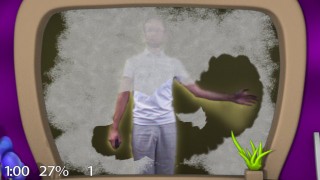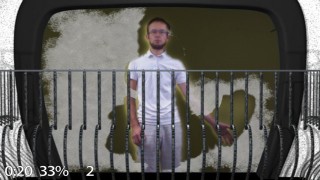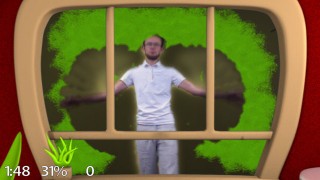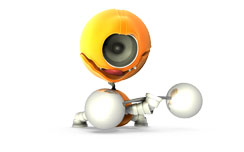
 |
 |
 |
BRIEF DESCRIPTION
In the game Cleaner the patient cleans a set of windows in virtual reality by wiping off the virtual dirt. The patient’s aim is to clean as many windows as possible in the amount of time set by the therapist. The area that the patient is supposed to clean is under the strict control of the therapist. For instance, if the patient is unable to clean the left side of the window, the therapist can cover only the right side of the window with dirt and gradually enlarge the dirty area with time.
RECOMMENDATIONS AND POSSIBILITIES
Recommended to patients with musculoskeletal dysfunctions of the upper limbs as well as to those with neurological disorders. The module can be used for increasing the range, quality and patients’ awareness of movements performed with the upper limbs. The proposed exercise serves to strengthen muscles, stretch the arms up and sideways, and to exercise the injured upper limb with or without the support of the healthy one. During the exercises the patient sees the mirror image of her-/himself.
PATIENT REQUIREMENTS
The exercise in this module is very intuitive and therefore do not require any special abilities of the patient. It is possible to perform the exercises in sitting or standing positions. The exercise is appropriate also for patients with upper limb amputations.
TASKS
In the standard version of the exercise the patient is required to perform the movements analogous to the movements normally performed during actual window cleaning (left/right and up/down upper limb movements). However, the therapist can modify the parameters for the exercise in order to change the standard task. For instance, the patient’s task may be to clean only the upper part instead of the whole window. The patient performs the exercise at her/his own rate and the system counts the number of windows cleaned in the set amount of time.
DIFFICULTY LEVELS
The difficulty of the exercise depends on the arrangement of the exercise parameters. That is, the therapist can adjust the level of difficulty to the patient’s individual needs by changing certain parameters. For instance, for patients with limited range of upper limb movement the therapist can make the window dirty only in the area which the patients is able to reach leaving clean these parts of the window that the patients cannot reach. Another option is to set the system to measure the percentage of the window cleanness, which allows to examine the patients’ actual range of motion. The therapist can also choose the color of the dirty areas of the window and determine which part of the patient’s body will be used for cleaning. The change of color is helpful when it is difficult for the patient to differentiate between the color of the dirty area and the color of the patient’s clothes, or the color of the room. Due to the possibility of choosing the active body part for performing the exercise, the therapist can prevent the patient from using (only) the healthy hand for cleaning the window. In order to make the task more difficult and to increase the patient’s body awareness the therapist can use the option of ‘floating image’. This will produce the visual effect due to which the image of the window and the patient will appear to move as if located on a boat moved by waves.
DATA AND REPORTS
The module helps to save data concerning the range of the upper limb movements and the level of effectiveness in accomplishing the exercise.
HINTS AND TIPS
The recommendations mentioned in the section RECOMMENDATIIONS and POSSIBILITIES do not exhaust the possible uses of the module. The proposed exercise can be used also to train the patient’s legs. For this, the focus of the camera has to be placed on the legs of the standing/sitting patient (by the use of the slider panel). In this version of the exercise the patient cleans the window with her/his feet. It is also possible to obtain interesting results when the patient uses her/his head to perform the exercise. However, in case of any variation from the standard version of exercise, the patient’s results have to be evaluated by the person leading the training.
More information


This is a modern approach to rehabilitation, which is fun for the patient. This form of a session, from the psychological point of view, brings many positive aspects, which result in stronger effects - desired in terms of improving the functioning of the people undergoing the rehabilitation. Find more Kinect Rehabilitation




